Vallee Classification System
Classification of anomalies related to UFOs
| 1 | 2 | 3 | 4 | 5 |
AN
anamoly |  |  |  | 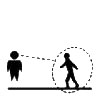 |  |
FB
flyby |  |  |  | 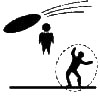 |  |
MA
maneuver |  |  | 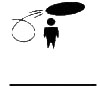 |  | 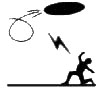 |
CE
close encounter |  | 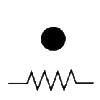 |  |  | 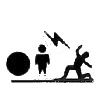 |
| Sighting | Physical
Effects | Living
Entities | Reality
Transform | Lasting
Injury |
A NEW CLASSIFICATION SYSTEM: ANOMALIES, CLOSE ENCOUNTERS, MANEUVERS,
AND FLYBYS
Confrontations : A scientist's search for alien contact.
Jacques Vallee
Ballantine Books. New York 1990
(pg 236-242)
In order to encompass the full range of phenomena one finds in the
modern literature, it is important to acknowledge that UFos are
related in significant ways to other anomalies. It is the rule, rather
than the exception, to find significant UFo sightings preceded or
followed by other anomalies, notably of the poltergeist variety.
For that reason, I have found it useful to begin with a classification of anomalies
into four groups that parallel Hynek's close encounter categories:
- AN1 are anomalies that do not have lasting physical effects, such as amorphous lights or unexplained explosions.
- AN2 are anomalies with lasting physical effects, such as some poltergeist phenomena, apports (materialized objects), and areas of flattened grass.
- AN3 are anomalies with associated entities. lhis class could include reports of ghosts, yetis, and other instances of cryptozoology as well as elves and spirits.
- AN4 are those anomalous reports m wmcn wlmesses experlencea per
sonal interaction with entities in the reality of the entities
themselves.They include near-death experiences, religious miracles and
visions, and many cases of out-of-body experiences.
Finally, I place under the AN5 category the cases of anomalous injuries or deaths,
such as spontaneous combustion or unexplained wounds. I also place here the cases of
permanent healing often described in the literature of the paranormal. The
unexplained beating of Mrs. Victor described in chapter 6 belongs in the AN5
category.
We now come to the UFO reports themselves, which I will divide, following Allen
Hynek, into close encounters and distant sightings.
I see no reason to change anything to the classification of close encounters which is
in current use, from CE 1 to CE4, although Hynek himself was not responsible for
creating the CE4 category and was not especially happy with it. In recent years the
need has become acute for a new category, CE5, which will encompass cases of close
encounters in which the witnesses have suffered permanent injuries or other
physiological effects.
The distant sightings, in my view, are best classified according to the apparent
behavior of the object rather than circumstances independent of it, such as daylight
or night, or radar rather than visual observation. Accordingly, I have found it
useful to introduce two general categories called MA for "maneuvers" and FB for
"flyby." Within these categories I have tried to give definitions that were parallel
to those of close encounters:
- MA1 gathers those UFO observations that involve an object with a discontinuous trajectory (such as a drop, a maneuver, or a loop).
- MA2 includes those cases that give rise to physical effects in addition to a discontinuous trajectory: the episode in Arcachon, described in chapter 1, in which an object triggered the photocell for the whole city, fits in the MA2 category.
- MA3 contains the cases of objects with discontinuous trajectories when beings are observed on board. Some of the "airship" cases of the late nineteenth century were in this category, as well as the famous 1959 sighting by Father Gill in New Guinea.
- MA4 covers instances of maneuvers accompanied by a sense of transformation of reality for the percipient.
- MA5 is a maneuver as a result of which the witnesses suffer permanent injury or death. Part five of this book gives several detailed examples of this category. The reader will note in the index beginning on page 242 that I have also placed under MA5 the case of Dr. X, in which we do not have permanent injuries but perrnanent healing.
- FB1 is a simple sighting of a UFO "flying by" in the sky, the category most frequently reported.
- FB2 is a flyby accompanied by physical evidence.
- FB3 is a flyby of an object accompanied by the obversation of beings on board. Although rare, this type of observation is reported occasionally.
- FB4 is a flyby where the witness experienced a transformation of his or her reality into the reality of the object or its occupants.
- FB5 would be a flyby as a result of which the witnesses would suffer permanent injuries, as in the celebrated Cash-Landrum case in Texas, which can be found in the literature. In that case, two women and a boy were hurt by the effects of a bright object that flew above them without landing or stopping.











































